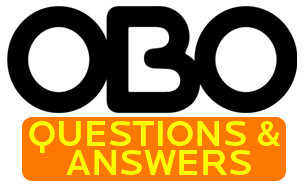
Question:
My name is Josh and I’m not sure if you remember me but you were a coach of mine. I was a keeper in on the U-20 team in ’99 when Shiv cialis buy canada carried 5 keepers (I think it was 5). I had been an alternate on the U-16 the year before. That’s about all there was to my National Hockey carrier so I’m not sure how much I might have stuck in you mind. Anyway the summer after our goalkeeping camp with Ian Taylor I tore apart my knee, severely damaging my ACL, MCL and annihilating my medial meniscus. I hung up my pads (I’m still not sure why) and that was that. About a year ago I picked up a stick again, with a local club. I live in NYC now and found a club that plays on turf and has some real talent, lot of internationals. I keep very fit and hockey has been a welcome addition to my workout schedule. I have been enjoying playing the pitch, and now this winter I’ve picked up indoor.
Here’s where I have come to seeking you out. We are going to play in a mixed tournament in Baltimore at the end of January and I was asked to play in the cage. I’m game, it could be a lot of fun, but I haven’t had pads on in ages. I’ve been helping coach a few of the women keepers in the club so I’ve been getting it back in my brain, and in my body a bit. My question is: how does the difference of the indoor game affect the keeper. I can imagine that one needs to play very actively, it’s so fast. I’d really appreciate any advice you might have. I’ve found very little in the way of resources on the web, except the OBO page where I found your e-mail. I also will have a real mix of a kit. I still have my old helmet which is solid, first gen ROBO OBO gloves and groin guard. The club has a nice set of pretty new leggaurds, kickers, shorts and such. The only piece we are missing is upper body. I may have found a deal on one, Longstreath has TK 1.2 upper body armour for sale for about $150. I’ve always like TK but have no idea where in their range that item sits and what level of protection it will offer. My apologies, I know this is rather out of the blue and thanks again for any advice or ideas you might have. I really enjoyed my limited time on the team and wish I had been able to play before I was injured. Maybe this tourney will get me back into keeping…
Answer:
Hi Josh,
I’m glad you’ve rediscovered hockey. As far as indoor, it’s a challenging game for the keeper. Percentage-wise the court has a greater scoring area than outdoor hockey which allows the keeper a relatively greater area to be involved in the play.
Just as there are a number of styles for field keepers, there are a number of styles for indoor keepers and much of that depends on the style of play for your team and your athletic attributes.
The big technical advantage to indoor keeping is that you are the only player that can play on the ground (in the circle). This allows you a greater tackling surface when taking on dribbling players. That advantage is nullified though if you can’t set up a slide tackle and/or can’t recover to an upright position quickly.
It’s extremely difficult to explain a style of indoor keeping, but I think there are a lot of good examples if you go on youtube and look for indoor hockey. At the international level, indoor keeping requires excellent agility and speed as well as great reflexes and the ability to read the play.
On the equipment front, I play with a modified ice hockey goalkeeper upper body unit. I’ve seen the TK unit, but I think the ice hockey type units are more portective and better-constructed. If you’re looking in that direction, you can usually getg a good deal on a used one on e-bay or from the clearance section from a lot of the ice hockey internet stores. If you need ideas where to look let me know.
It sounds like you’re enjoying your hockey and it’s important to maintain that. The nice thing about indoor is that you have an opportunity to see alot of the ball. If a goal goes in, life goes on. It’s likely you and your team will have chances to redeem themselves. Have fun and good luck,
Jon
